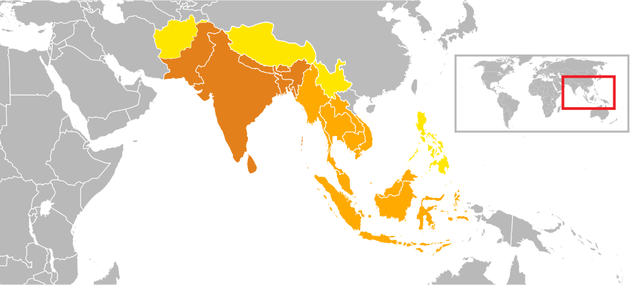firstly, what is indianisation, anyway?
Indianisation is the spread of Indian cultures, religions and beliefs to other countries or regions, in this case Southeast Asia.
Southeast Asia was under Indian influence since about 200B.C. due to India's political and trade relations with countries such as Burma, Indonesia, Thailand and Cambodia. However, this museum will be focusing on the Indianisation of the region during the Golden Age of Empires and Kingdoms of the 7th to 14th century.
There are many theories about how Indianisation came about. This exhibit will present four different theories, together with relevant photographs and visuals.
Click here to continue to Part 1 of this exhibit.
Southeast Asia was under Indian influence since about 200B.C. due to India's political and trade relations with countries such as Burma, Indonesia, Thailand and Cambodia. However, this museum will be focusing on the Indianisation of the region during the Golden Age of Empires and Kingdoms of the 7th to 14th century.
There are many theories about how Indianisation came about. This exhibit will present four different theories, together with relevant photographs and visuals.
Click here to continue to Part 1 of this exhibit.

Map depicting the extent of Indianisation
Legend:
Dark orange - The Indian subcontinent
Light orange - Countries culturally linked to India (e.g. Cambodia, Burma)
Yellow - Regions with significant Indian cultural influence (e.g. Tibet)
Legend:
Dark orange - The Indian subcontinent
Light orange - Countries culturally linked to India (e.g. Cambodia, Burma)
Yellow - Regions with significant Indian cultural influence (e.g. Tibet)
